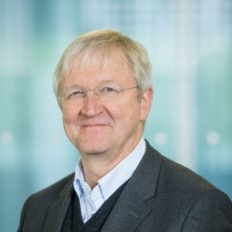Metal-Based Aerogels and Porous Composites as Efficient Catalysts: Synthesis and Catalytic Performance
A special issue of Catalysts (ISSN 2073-4344). This special issue belongs to the section "Catalytic Materials".
Deadline for manuscript submissions: closed (10 December 2022) | Viewed by 15617
Special Issue Editors
Interests: metal aerogels; hydrogels; nanoscience; electrocatalysis; smart materials
Special Issues, Collections and Topics in MDPI journals
Interests: atomic scale materials; electrocatalysis; biocatalysis; nanozymes; biosensing
Special Issues, Collections and Topics in MDPI journals
Interests: sensor design; bioelectrochemistry; electrocatalysis; aerogel structures
Interests: porous materials; composite materials; electrocatalysis; sensors; encryption
Interests: biosensors; biofuel cells; metal aerogels; electrocatalysis
Interests: synthesis and characterization of nanosized objects and their superstructures together with their photophysical, electrochemical, and structural properties
Special Issue Information
Dear Colleagues,
I am reaching out to let you know that the Special Issue entitled “Metal-based Aerogels and Porous Structures as Efficient Catalysts: Synthesis and Catalytic Performance” has been launched and is waiting for your contributions. Metals, particularly those of nano-size, have been widely recognized for their outstanding intrinsic catalytic activities which are attributed to their broad compositions, highly tunable electronic properties, highly controllable morphology, and remarkable electrical conductivity. Therefore, and for a long time, metal-based materials have played the most important role in diverse fields ranging from the petroleum industry, hydrogen energy, and oxygen electrochemistry to carbon neutralization. To further promote their catalytic potential, engineering bulk metals and metal-based composites into porous nanostructures provides a fascinating route by increasing the number of active sites, facilitating mass transfer, and bringing about intriguing confinement effects. As an example, metal aerogels, which are self-supported porous materials completely made of metals, have obtained much higher activity and durability compared to widespread metal- and non-metal-based catalysts, thanks to the great efforts made in the last decade.
During the journey of pursuing superior metal-based aerogels and porous materials, exploring synthesis methodologies, unveiling catalytic mechanisms, and building up structure/composition-performance correlations are of paramount importance. In light of this, this Special Issue aims to collects both original research and reviews that reflect recent advances (both experimentally and theoretically) or provide new perspectives, particularly in developing syntheses and catalytic-related applications of metal-based aerogels and porous composites. Submissions are welcome (but not limited) in areas such as:
- Design and synthesis of metal aerogels;
- Design and synthesis of metal-based porous composites, such as metals supported on carbon aerogels;
- Theoretical prediction and simulation of the formation process of metal-based porous materials;
- Design novel metal-based porous materials for catalysis;
- Experimental or theoretical investigation of catalytic mechanisms with metal-based porous materials;
- Design metal-based porous materials for new applications.
Submit your paper and select the Journal “Catalysts” and the Special Issue “Metal-Based Aerogels and Porous Composites as Efficient Catalysts: Synthesis and Catalytic Performance” via: MDPI submission system. Please contact the Guest Editor or the journal editor (cicy.chen@mdpi.com) for any queries. Our papers will be published on a rolling basis (accepted papers will be published continuously in the Special Issue (as soon as accepted)) and we will be pleased to receive your submission once you have finished it.
Prof. Dr. Ran Du
Prof. Dr. Chengzhou Zhu
Prof. Dr. Bin Cai
Prof. Dr. Wei Liu
Prof. Dr. Dan Wen
Prof. Dr. Alexander Eychmüller
Guest Editors
Manuscript Submission Information
Manuscripts should be submitted online at www.mdpi.com by registering and logging in to this website. Once you are registered, click here to go to the submission form. Manuscripts can be submitted until the deadline. All submissions that pass pre-check are peer-reviewed. Accepted papers will be published continuously in the journal (as soon as accepted) and will be listed together on the special issue website. Research articles, review articles as well as short communications are invited. For planned papers, a title and short abstract (about 100 words) can be sent to the Editorial Office for announcement on this website.
Submitted manuscripts should not have been published previously, nor be under consideration for publication elsewhere (except conference proceedings papers). All manuscripts are thoroughly refereed through a single-blind peer-review process. A guide for authors and other relevant information for submission of manuscripts is available on the Instructions for Authors page. Catalysts is an international peer-reviewed open access monthly journal published by MDPI.
Please visit the Instructions for Authors page before submitting a manuscript. The Article Processing Charge (APC) for publication in this open access journal is 2700 CHF (Swiss Francs). Submitted papers should be well formatted and use good English. Authors may use MDPI's English editing service prior to publication or during author revisions.
Keywords
- metals
- aerogels
- porous materials
- composites
- nanostructures
- controlled synthesis
- catalysis
- electrocatalysis










